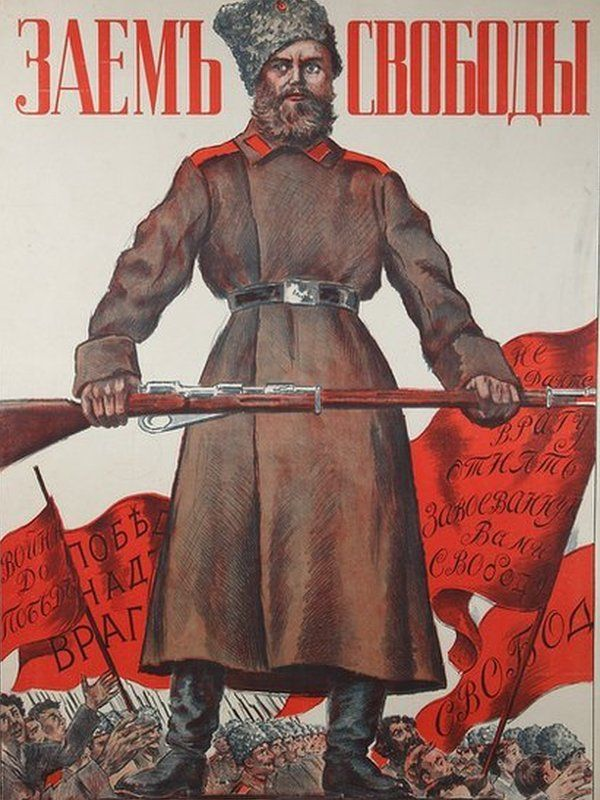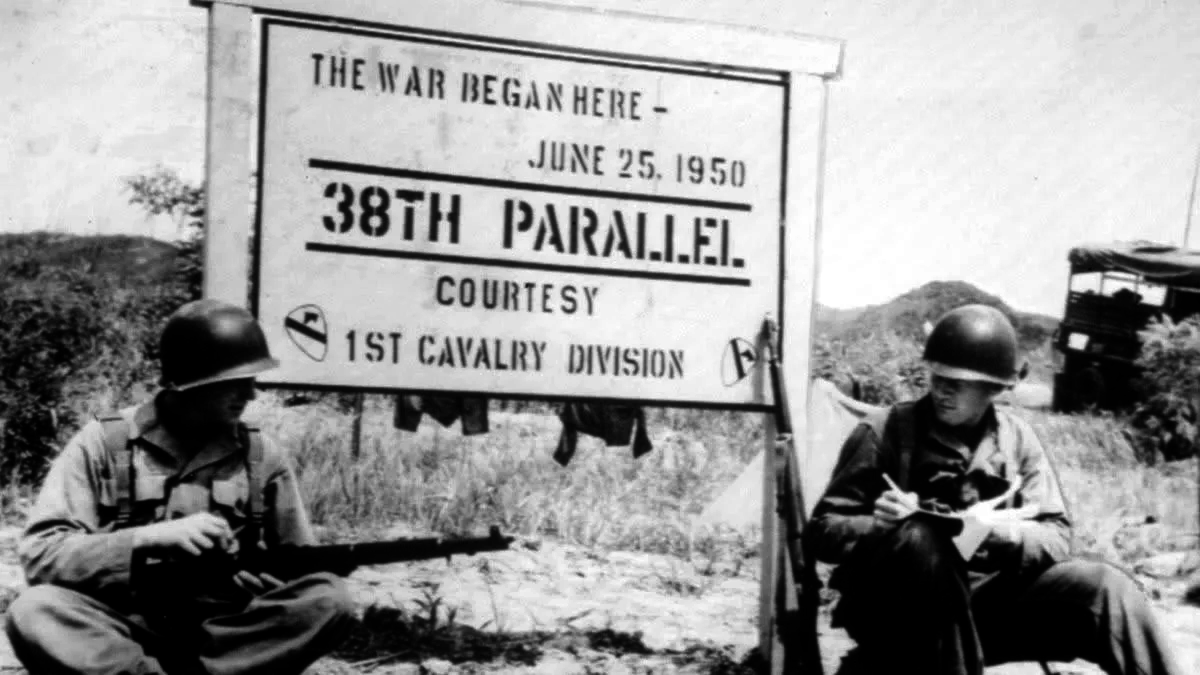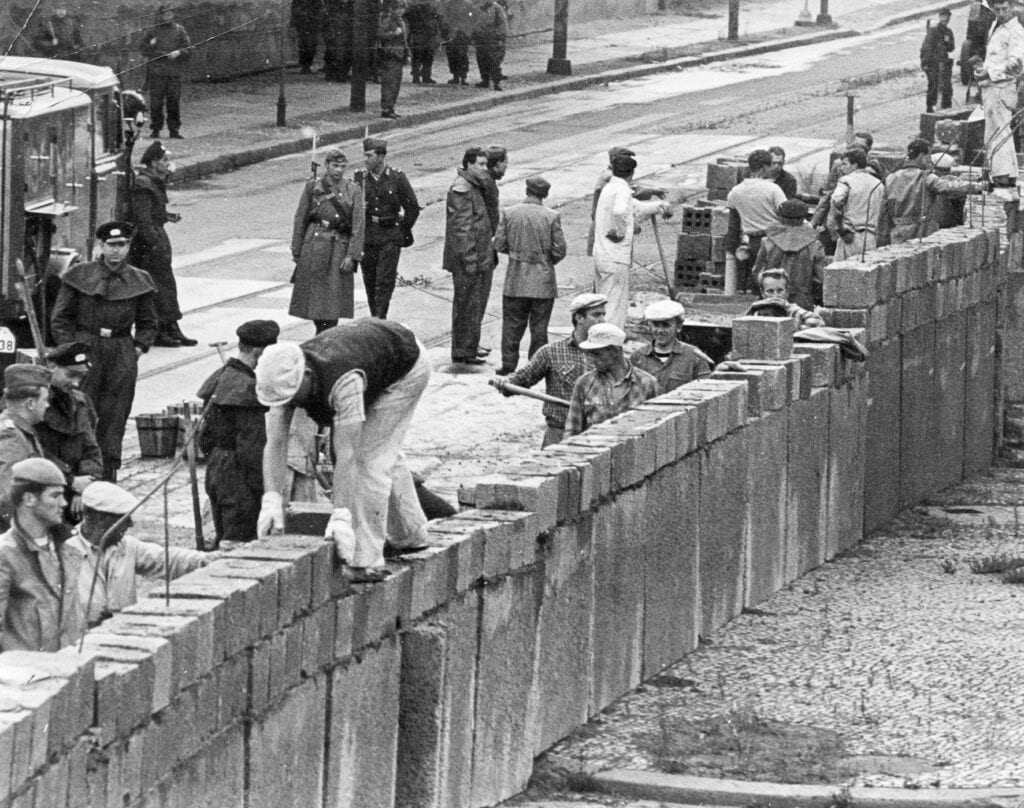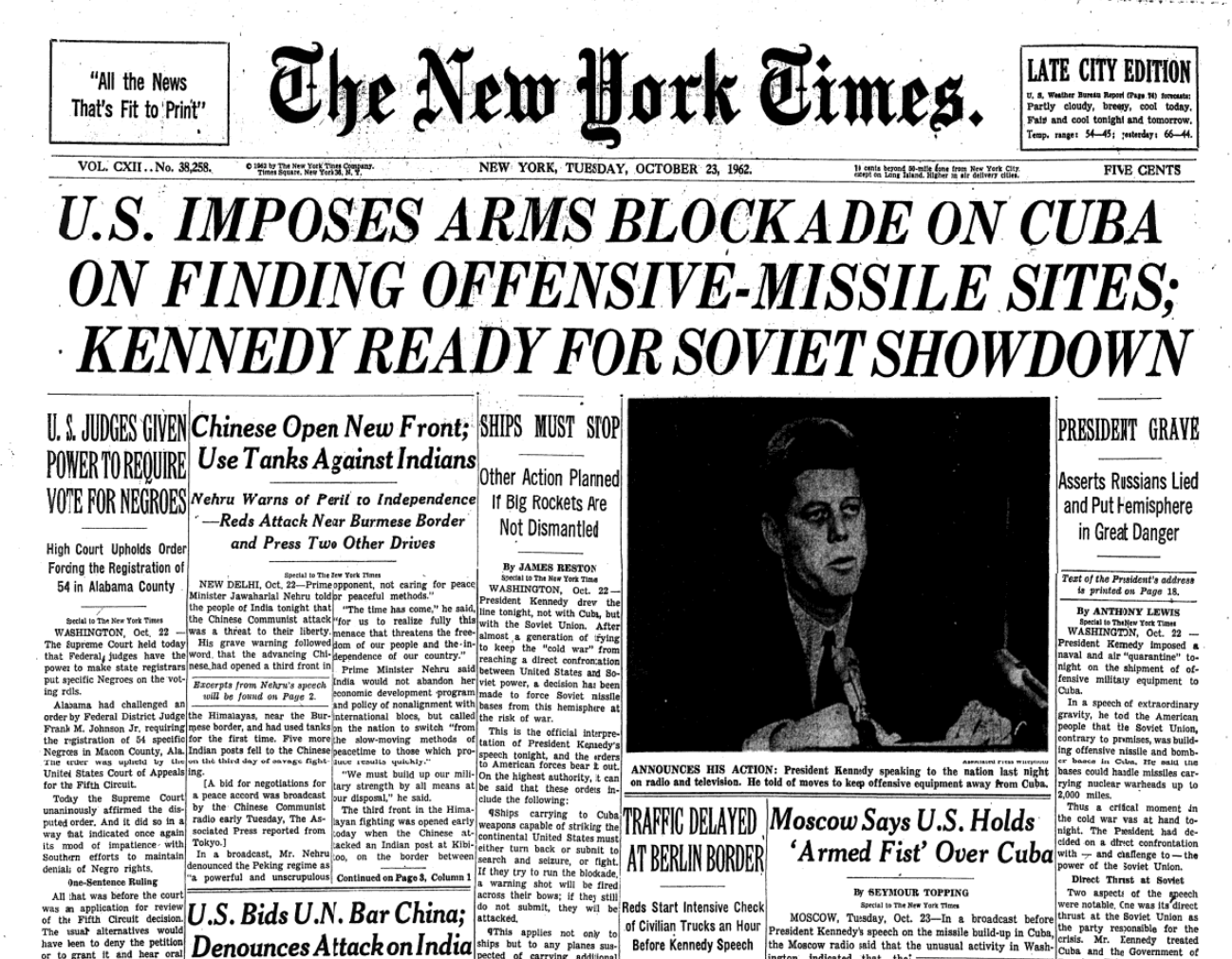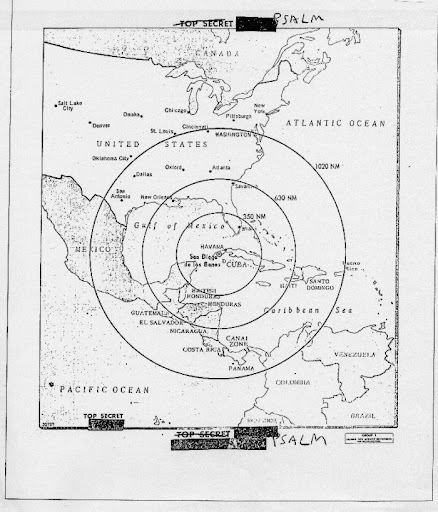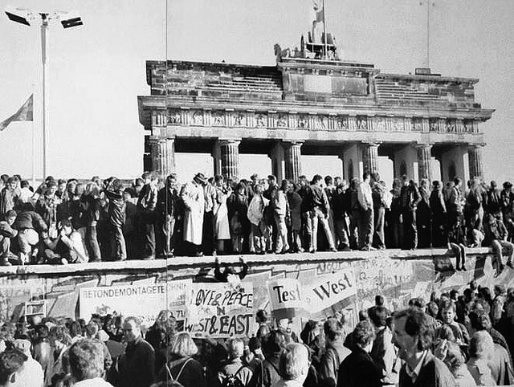Cold War Timeline
As memories of the Cold War fade into history, I felt it would be a good idea to produce a timeline of what actually happened, fortunately many people who lived through the period, like myself, are still alive; but as each year passes so do the number of witnesses. Not every event can be included, but on this page you will find an outline and on the accompanying pages you will find details and links to key events.
For those of us who lived through the period there was the background of the constant ideological struggle between east and west. It impinged on all of our live to some extent. At times it became quite intense. Most of he population of the UK managed to avoid thinking about it for much of the time, but periodically something would happen which brought it to the forefront.
Most people think of the Cold War as starting shortly after the second world war and ending in the early 90s. The reality is rather different. As far as Russia was concerned it really began with the October Revolution of 1917, long before Winston Churchill's keynote speech of 1946. Immediately that the Bolsheviks, to their own surprise, came to power they found themselves surrounded by hostile agencies. These forces came from both within the country and without. Where they didn't actually, exist their understanding of Communism created them, either in reality or mentally. Marxists throughout the world understood that they were in a class war, Marx and Engels had told them so. In effect the Bolsheviks declared an ideological war on every country in the world. All countries, according to Lenin, were run by imperialist, capitalist, "bourgeois scum". It was the duty of every communist to fight the battle to come.
The British were among the first to react in suggesting the buy up of Russian banks and assets. The Communists responded by simply nationalizing the banks and assets. The British reply was to mount a covert sabotage and espionage campaign, including bribery to scuttle merchant ships and flood mines. One of the most audacious British plans occurred on 1st July 1918, when a Special Operations force raided the Czar's house in an attempt to rescue him and his family. In the event only one member of his family, his daughter Tatiana, managed to make it back to England. The response of Lenin was to order the execution of the Czar and his family. In this tit-for-tat war Britain was swift to respond. Robert Bruce Lockhart, the British consul to Moscow, was in reality a British Secret Service (MI6/SIS) agent. He was ordered to undertake the assassination of Lenin. Bruce Lockhart used the famous spy, Sidney Reilly who recruited Fanny Kaplan, real name Feiga Haimovna Roytblat to shoot Lenin, which she did on 31st August, he was hit but not killed. The reaction involved the sacking of the British Embassy in Petrograd. The British, of course, demanded an apology which was not forthcoming, and the Soviets retaliated by arresting Lockhart as a spy. Reilly escaped to England. The British arrested the top Bolshevik in London Maxim Litvinov. Later came what was to become quite common during the Cold War, namely an exchange, this time Lockhart for Litvinov.
Within months the Soviets made it clear that their aim was world domination, when they introduced the Communist International.
The reason that the Cold War started and continued such a long time is probably down to a mutual mistrust between the Soviet Union and its allies - principally China, and others at various times, and the USA and its allies - principally the UK, Canada, New Zealand and Australia plus, later, other members of NATO (North Atlantic Treaty Organisation).
Whilst the above is undoubtedly true, for the purposes of this site, it is really only necessary to consider the period from 1945 until the early 90s. It is generally conceded that the latter part of 1945 marked the time when relations between Moscow and Washington began deteriorating.
At the close of World War II, the Soviet Union stood firmly entrenched in Eastern Europe, they were intent upon installing, in the region, governments that would pay allegiance to the Kremlin. It also sought to expand its sphere of influence into North Korea, Central Asia, and the Middle East. Similarly, the United States established a security zone of its own that comprised Western Europe, Latin America, Southeast Asia, Australia, New Zealand, and Japan. Both sides were looking for a way to secure their futures from the threat of another world war, but it was the threat that each side perceived from the other that allowed for the intensification of the existing mutual suspicion.In
the early Cold War (between 1945 and 1948), the conflict was more
political than military. Both sides argued with each other at the UN,
sought closer relations with nations that were not committed to either
side, and articulated their differing visions of what a postwar world
should. By 1950 the Cold War had become an increasingly militarized
struggle. The communist takeover in China, the pronouncement of the
Truman Doctrine, the advent of a Soviet nuclear weapon, tensions over
occupied Germany, the outbreak of the Korean War, and the formation of
the Warsaw Pact and the North Atlantic Treaty Organization as rival
alliances had all enhanced the Cold War's military dimension. U.S.
foreign policy reflected this transition when it adopted a position
that sought to "contain" the Soviet Union from further expansion this
containment policy would remain the central strategic vision of U.S.
foreign policy from 1952 until the ultimate demise of the Soviet Union
in 1991.
Successive American presidents and successive Soviet premiers tried,
in a variety of ways, to manage the Cold War, and the history of their
interactions reveals the delicate balance-of-power that needed to be
maintained between both of the superpowers. Dwight D. Eisenhower campaigned
as a hard-line Cold War Warrior and spoke of "rolling back" the Soviet
empire, but when given a chance to dislodge Hungary from the Soviet
sphere-of-influence in 1956, he declined. The death of Stalin in 1953
prefaced a brief thaw in East-West relations, but Nikita
Krushchev also found it more politically expedient to take a
hard line with the United States than to speak of cooperation.
Cuban Missile Crisis (October 1962)
Around the time of the Cuban Missile Crisis, intelligence officers in the US created a map to show the potential range of Soviet missiles if they were launched from Cuba. By 1960, both sides had invested huge amounts of money in nuclear weapons, both in an attempt to maintain parity with each other's stockpiles, but also because the idea of deterring conflict through "mutually assured destruction" (MAD) had come to be regarded as vital to the national interest of both. As nuclear weapons became more prolific, both nations sought to position missile systems in ever closer proximity to each other's borders. One such attempt by the Soviet government in 1962 precipitated the Cuban Missile Crisis, arguably the closest that the world has ever come to a large-scale nuclear exchange between two countries.
In the early 1960s the American containment policy shifted away from a heavy reliance on nuclear weapons to more conventional warfare in pursuit of a more "flexible response" to the spread of communism. Although originally articulated by President Kennedy, it was in 1965 that President Johnson showcased the idea of flexible response when he made the initial decision to commit American combat troops to South Vietnam. American at that time regarded Southeast Asia as vital to its national security, and President Johnson made clear his intention to insure South Vietnam's territorial and political integrity "whatever the cost or whatever the challenge."
The
United States ultimately fought a long, bloody and costly war in
Vietnam that poisoned U.S. politics, damaged its reputation in much of
the world, and seriously damaged its economy. The Nixon
administration inherited the conflict in 1969, and although it tried
to improve relations with the Soviets through detente,
and even took the unprecedented step of establishing diplomatic
relations with Communist China , neither development brought about
decisive change on the Vietnamese battlefield. The United States
abandoned the fight in 1973 under the guise of a peace agreement that
left South Vietnam emasculated and vulnerable.
Although Nixon continued to negotiate with both the Soviets and Maoist
China, the Soviet Union and the United States continued to subvert one
another's interests around the globe in spite of the hopes of detente.
Leonid
Brezhnev became Soviet premier in 1964 as Kruschev's
replacement, and while he too desired friendlier relations with the
United States on certain issues, particularly agriculture, genuinely
meaningful cooperation remained elusive.
By the end of the 1970s, the hope for an extended thaw had utterly
vanished. Jimmy Carter became president in 1976, and although he was
able to hammer out a second arms limitation agreement with Brezhnev,
the 1979 Soviet invasion of Afghanistan significantly soured
U.S.-Soviet relations. In an attempt to place a greater emphasis on
human rights in his foreign policy, Carter angrily denounced the
incursion and began to adopt an increasingly hard line with the
Soviets. The following year, Americans overwhelmingly elected a
president who spoke of waging the Cold War with even greater intensity
than had any of his predecessors, and Ronald Reagan made good on his
promises by dramatically increasing military budgets in the early
1980s.
By 1985 Mikhail
Gorbachev had replaced Brezhnev in Moscow, and he quickly saw
that drastic changes in the Soviet system were necessary if was to
survive. He instituted a series of liberal reforms known as perestroika, and he seemed
genuinely interested in more relations with the West, a principal
known as glasnost.
Although Reagan continued to use bellicose language with respect to
the Soviet Union for example labeling it an "evil empire", the
Gorbachev-Reagan relationship was personally warm and the two leaders
were able to decrease tensions substantially by the time Reagan left
the White House in 1989.
Despite improved East-West relations, however, Gorbachev's reforms
were unable to prevent the collapse of a system that had grown rigid
and unworkable. By most measures, the Soviet economy had failed to
grow at all since the late 1970s and much of the country's populace
had grown weary of the aged Communist hierarchy and its command
economy. In 1989 the spontaneous destruction of the Berlin Wall
signaled the end of Soviet domination in Eastern Europe, and two years
later the Soviet government itself fell from power.
The Cold War had lasted for forty-six years, and is regarded by many
historians, politicians, and scholars as the third major war of the
twentieth century. Some experts are of the opinion that the Cold War
never ended. Events such as the annexation of the Crimea, and the
invasion of Ukraine would support that view.

